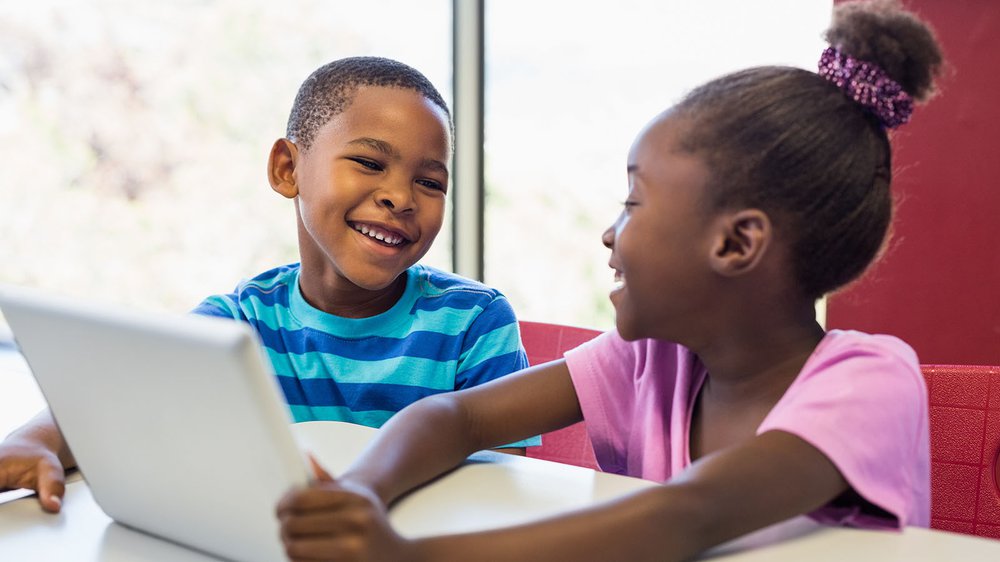Keeping students engaged in their learning for an average of seven hours a day and 180 days a year is no easy feat. Every day, teachers work to create optimal learning experiences that help students stay motivated yet challenged.
Challenges are important to the learning process because they help students grow. When a student doesn’t know something or is trying something new, it can feel uncomfortable at first. As they work toward the learning goal, they gradually become more comfortable. This effort builds authentic engagement and can result in better comprehension and deeper learning. It can also build college and career readiness skills, such as problem-solving skills or grit (a.k.a. resilience or perseverance). By engaging in an appropriate level of challenge, students learn that they can work toward a goal, overcome obstacles, and stick with something even when it’s difficult. These experiences help them build the confidence to take risks, fall down and get back up, and tackle content they’ve never seen before.
Too much challenge, however, can lead to anxiety and frustration. At the other end of the spectrum, learning tasks that are too easy can lead to boredom and apathy. Either of these extremes can diminish students’ motivation and negatively impact their learning and self-esteem.
In the classroom, teachers are constantly monitoring students’ levels of struggle and making adjustments on the fly to motivate them to rise to the learning challenge at hand. But what about when students are working with online programs and interventions? What should educators look for to make sure those programs are challenging and motivating students? Below are a few questions to consider.
Does the program provide personalized learning experiences for each student?
When an online program is personalized to each learner’s strengths and weaknesses, they can maximize their time and get through more content faster. Instead of repeating what they already know or becoming bored with exercises that are too easy, they can spend more time on the skills they need to develop.
These personalized learning experiences also help improve “flow.” In the book, “Flow: The Psychology of Optimal Experience,” psychologist Mihaly Csikszentmihalyi revealed that what makes an experience genuinely satisfying is a state of consciousness called “flow.” The good news for educators is that this state of heightened focus and immersion in activities can be controlled, rather than being left to chance. Keeping students challenged at a level just above their current abilities — without overwhelming them — encourages flow. When students are “in the zone” and immersed in their work, time flies and they’re more motivated to jump into it again the next day.
Does it provide real-time interventions?
An online learning program should provide students with everything they need to work independently. If they get stuck, it should provide targeted interventions to get them moving forward again. For example, an online program that includes an intelligent back-end engine can intuit when a student is struggling and provide just-in-time interventions personalized to each learner’s strengths and weaknesses. With this technology, learners receive smarter, more focused interventions so they can stay motivated, progress more rapidly, and achieve faster results. When students can help themselves get “unstuck,” they demand less of the teacher’s time and attention, too.
Does it provide ongoing feedback that makes student progress visible and rewarding?
Learning is both a behavioral and biological process. When a child (or adult) is learning, their brain cells physically change in response to stimulation, forming pathways to facilitate the connections they use repeatedly. Their learning depends upon a specific feedback loop characterized by timing between stimulus, response, and reward. Delivering rewards (e.g., positive feedback when a student answers a question correctly) at just the right moment reinforces their learning, helping them get the most benefit from a program.
It’s also helpful for students to see exactly how far along they are so they can celebrate their progress. For example, a progress meter might show when they hit 10 percent milestones, while another meter tracks their progress between those milestones, e.g., for each increment of 1 percent. The latter is particularly helpful for difficult exercises that may take longer to complete. It shows students that even if it takes awhile, they’re making progress toward their goal. Then when they hit those bigger milestones, they can look back on how far they’ve come — and get excited about the journey toward the next milestone.
Of course, teachers don’t want students rushing through exercises, which can lead to mistakes and gaps in their learning. One way to prevent this is by showing students their “streaks” of correct answers in a row, e.g., their “current streak” and “highest streak.” When students strive for streaks, they stay focused and try to avoid mistakes, which helps them make faster progress.
Success begets success
Personalized learning experiences, real-time interventions, and ongoing feedback motivate students and give them the support they need to engage in challenges that will help them grow. When students are in the flow and immersed in their work, they get through more content faster. The more content they successfully complete, the more positive feedback they receive. This, in turn, motivates them to seek new challenges.
By striking the right balance between challenging and motivating students in the classroom and in online programs, educators can increase the impact on their learning. When students overcome challenges, their confidence is strengthened and they not only learn the material, but they learn about their own capabilities and what success feels like. These experiences lay the foundation to spur them on to future success. Success begets success.
As the author of more than 100 journal articles and multiple books, neuroscientist Martha S. Burns, Ph.D., is a leading expert on how children learn. She is an Adjunct Associate Professor at Northwestern University and serves as the Director of Neuroscience Education at Scientific Learning Corporation, makers of the neuroscience-based Fast ForWord® program.












